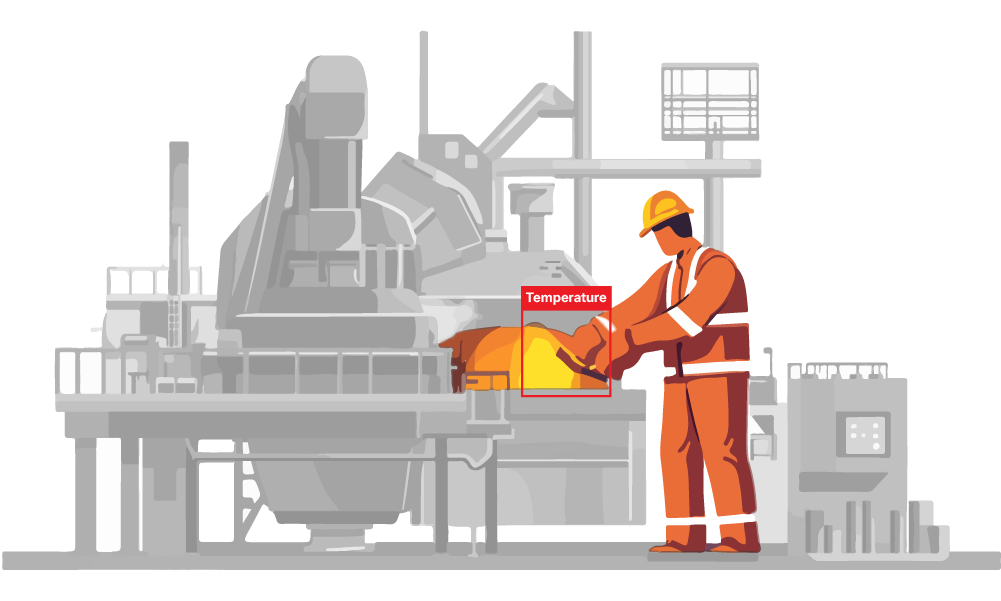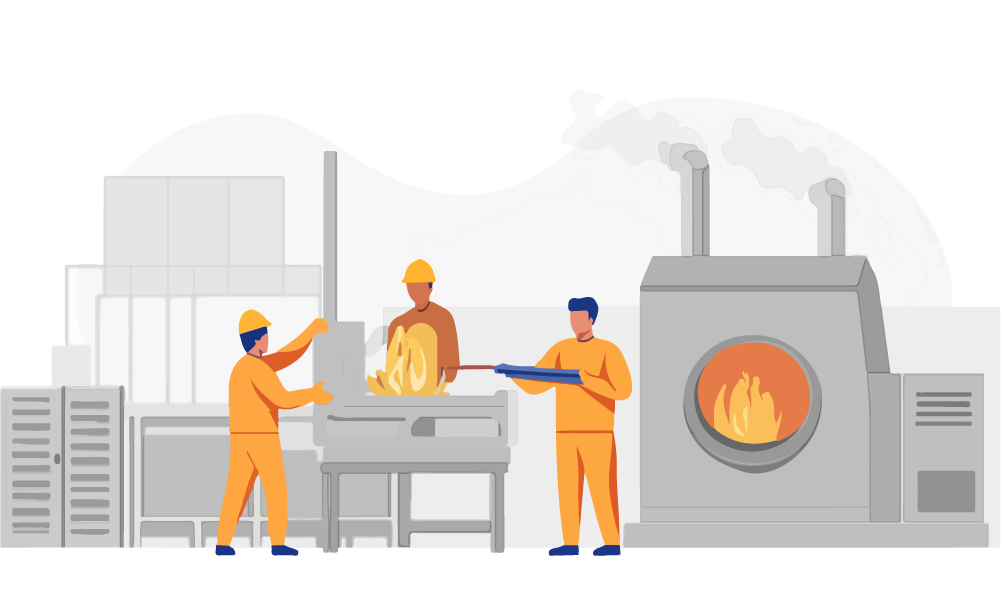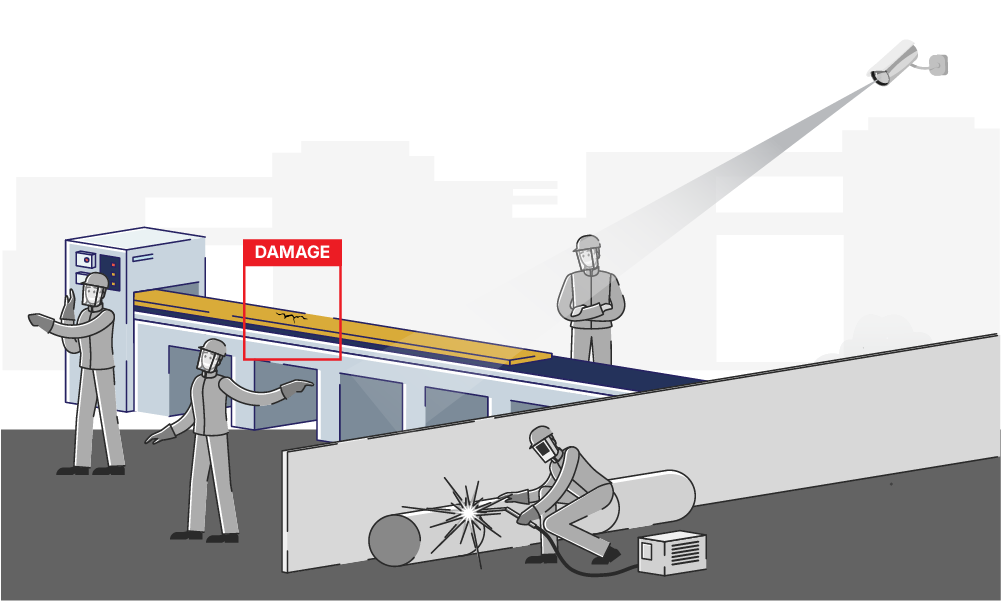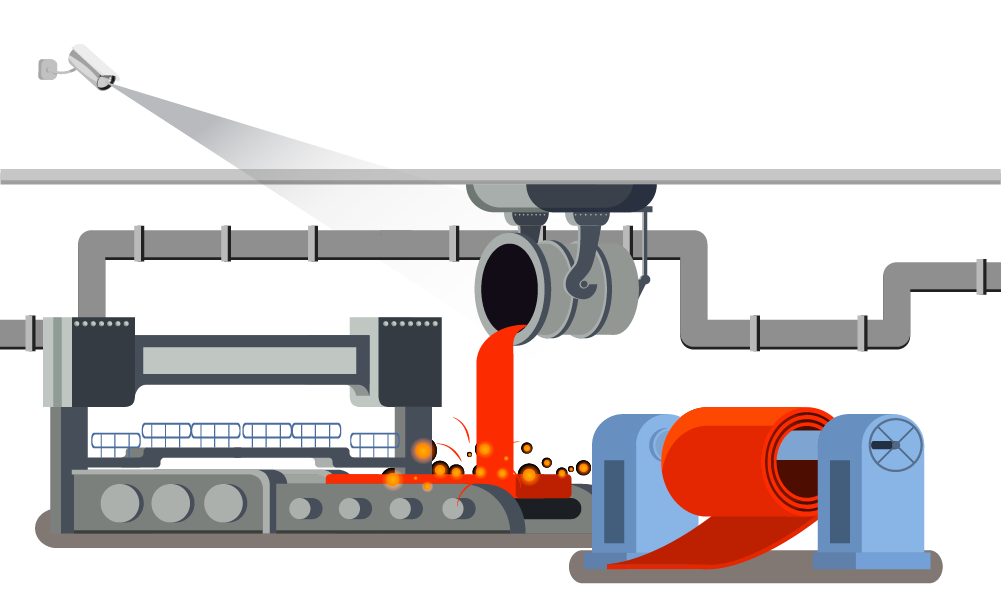HOT METAL TEMPERATURE VALIDATION
Ensure thermal accuracy. Prevent overheating. Maintain metallurgical precision in every pour.


In the steel industry, even a few degrees can determine the success or failure of casting, rolling, or quenching. Manual temperature checks using handheld pyrometers or spot sensors are often delayed, inaccurate, or dangerously close to molten zones.Hot Metal Temperature Validation uses non-contact thermal imaging and AI analysis to provide continuous, real-time monitoring of molten metal and hot surfaces, ensuring exact thermal thresholds are maintained at each critical step, from ladle to line.
Handheld devices offer point readings that dont reflect true thermal spread or gradient.
Close-proximity measurements expose workers to extreme heat and radiant zones.
Failure to maintain optimal temperatures leads to poor grain structure or unwanted defects.
Temperature anomalies are often detected too late, after casting or forming errors have occurred.
Monitors temperature across entire metal surfaces using AI-enabled thermal cameras.
Alerts operators instantly when metal temperatures move beyond safe ranges.
Provides heat distribution maps to detect hotspots, cold zones, and uneven thermal flows.
Syncs with casting or rolling controls to auto-adjust feed rates or cooling cycles.


We begin by identifying key stages where temperature accuracy is essential, such as ladle pouring, tundish levels, rolling exit, or pre-quench zones.
Thermal cameras are selected and calibrated for extreme heat ranges (800°C 1650°C) and placed at safe, shielded observation points using industrial-grade enclosures.
AI models are trained on visual + thermal data to correlate metal color, glow, and behavior with accurate temperature bands across steel grades and process variations.
Live thermal maps and status alerts are integrated with the control room interface. Auto-alerts are triggered for overheating, heat loss, or uneven flow, enabling timely intervention.
Stay updated with the trending and most impactful tech insights. Check out the expert analyses, real-world applications, and forward-thinking ideas that shape the future of AI Computer Vision and innovation.
Collaboration creates a story. Some are born from timing, others from shared ambition. But the partnership between WebOccult and Deeper-i began from something subtler, a mutual belief that intelligence should live closer to the world it serves. For years, Vision AI has been mastering the art of seeing, while Edge AI has been perfecting the […]

CEO & Co-founder
Any object that leaves a factory belt carries an identity. It may appear as a string of numbers etched into metal, a barcode printed on paper, or a label attached to packaging or glass material. Together, these small symbols form the nervous system of modern industry. They track movement, record responsibility, and ensure that everything […]

CEO & Co-founder
Every city breathes in patterns. Cars move, pause, and disperse in a rhythm that repeats itself through hours and seasons. Beneath this rhythm lies a kind of language, the pulse of motion that defines how urban life organizes itself. Yet, for all the technology that has reshaped cities, one of the simplest and most visible […]

CEO & Co-founder